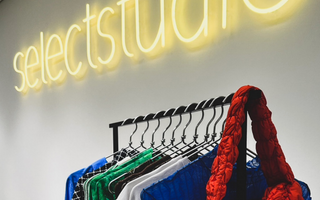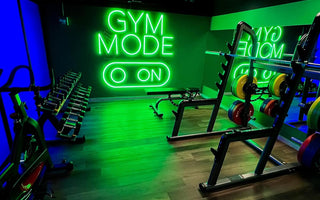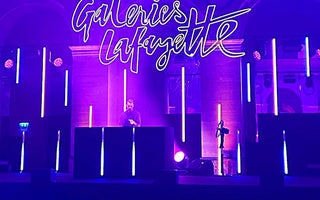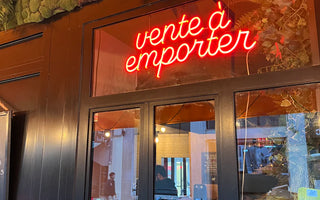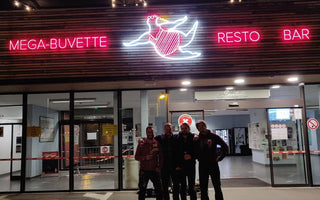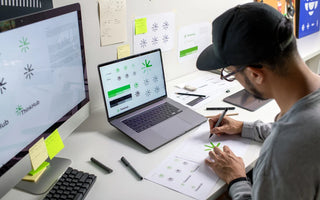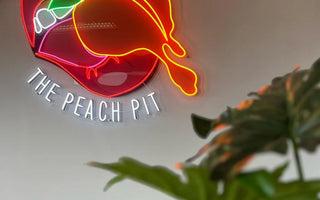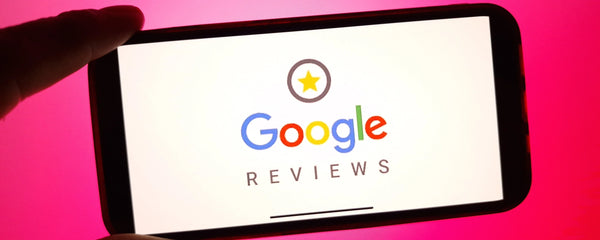Introduction
Neon signs are a blend of art and technology, combining creative design with complex manufacturing processes. These illuminated signs have been a staple of advertising and decoration for decades, capturing attention with their vibrant colors and unique designs. With the advent of LED technology, the manufacturing process for neon signs has evolved, offering new possibilities for customization and durability. This article explores in detail the manufacturing process of traditional and LED neon signs, focusing on the production of custom neon signs to meet specific design requirements.
Manufacturing process of traditional neon signs
Traditional neon signs have been crafted by skilled artisans for over a century. The process involves several painstaking steps that transform simple glass tubes into captivating neon lights. Here's how it's done:
1. Neon sign design
The first step is to create a design. This can range from simple text to complex logos or artistic illustrations. The design is usually created using graphic design software and then printed to serve as a template for shaping the glass tubes.
2. Shaping the glass tubes
Once the design is finalized, the glass tubes are carefully heated and bent to match the template. This is one of the most demanding aspects of neon sign production, requiring precision and skill. The glass is heated over a gas burner until it becomes malleable, then quickly shaped using tools and hand movements. Every curve and bend must be precise to ensure the sign illuminates correctly and matches the intended design.
3. Attaching the electrodes
Once the glass tubes are shaped, electrodes are attached to both ends of each tube. These electrodes are essential for conducting electricity through the tube, which excites the gas inside and produces light. The attachment process involves heating the ends of the tubes and fusing the electrodes to them.
4. Gas filling
Once the electrodes are in place, the air inside the glass tubes is evacuated using a vacuum pump. The tubes are then filled with a noble gas, such as neon or argon. Neon gas produces a bright red-orange light, while argon, usually combined with a small amount of mercury, emits a soft blue glow. The specific color of the light can be changed by using different phosphorescent coatings inside the tubes or by mixing gases.
5. Sealing and testing
After the tubes are filled with gas, they are sealed, and the entire system is tested. The tubes are connected to a high-voltage power source, which ionizes the gas inside, causing it to emit light. This process, called "tube ignition," allows the manufacturer to check for defects in the glass, gas pressure, or electrode connections. Any problems must be corrected before proceeding to final assembly.
6. Assembly and mounting
Once the individual tubes are shaped, filled, and tested, they are assembled to form the final design. The tubes are typically mounted on a frame or support material, often made of metal, wood, or acrylic. The mounting process involves securing the glass tubes with specialized clips or brackets to ensure their stability and alignment. The tubes are then wired together, with each section connected to a transformer that provides the voltage needed to power the sign.
7. Installation and finishing
The final step is to install the neon sign in its intended location. Whether it's a storefront, an indoor space, or an outdoor advertisement, the sign must be securely mounted and connected to a reliable power source. Additional finishes, such as protective covers or waterproofing for outdoor signs, can be added to improve the sign's durability and appearance.
Manufacturing Process of Modern Neon LED Signs
With the advent of LED technology, the neon sign manufacturing process has become more accessible and versatile. LED neon signs mimic the look of traditional neon but use flexible LED strips enclosed in durable tubes. Here's how custom neon signs are produced with LED technology:
1. LED Neon Sign Design
As with traditional neon signs, the process begins with a design. However, LED neon signs offer greater flexibility in terms of shapes, colors, and effects. The design is created digitally, allowing for easy modifications and precise measurements. Once finalized, the design is printed or displayed on a screen to serve as a guide for the next steps.

2. Cutting and shaping the LED strips
The LED strips are then cut to the required lengths based on the design. These strips are made from flexible and durable materials that can be bent and shaped to match intricate patterns or lettering. Unlike glass, which is fragile and requires careful handling, LED strips are more forgiving, making them easier to work with, especially for intricate or custom designs.

3. Mounting on an acrylic panel
Once the LED strips are shaped, they are mounted on an acrylic panel. This panel serves as both a support structure and a surface to display the sign. The LED strips are attached to the panel using adhesives or small clips, ensuring they stay in place and retain their shape. The panel itself can be transparent, colored, or even UV-printed to enhance the overall appearance of the sign.

4. Wiring and power supply
Once the LED strips are installed, they are connected to a power supply. Neon LED signs operate at a much lower voltage than traditional neon signs, making them more energy efficient and safer to use. The wiring process involves connecting the ends of the LED strips to a transformer or driver, which converts the standard electrical current into the appropriate voltage for the LEDs.

5. Testing and quality control
Once the wiring is complete, the LED neon sign undergoes a series of tests to ensure it is functioning properly. This includes checking for consistent lighting, the absence of flickering sections, and the security of all connections. Any issues detected during testing are resolved before the sign is ready for delivery or installation.

6. Final assembly and packaging
The final assembly of a neon LED sign includes additional finishing touches, such as the addition of protective covers or bezels. The sign is then ready for installation, which is generally faster and easier than traditional neon signs due to the lighter weight and lower power requirements of LED components.


Advantages of LED neon signs
While traditional neon signs have a classic charm, LED neon signs offer several advantages that make them a popular choice for custom signs:
-
Durability : LED neon signs are made from flexible and durable materials like silicone, making them much sturdier than fragile glass. This provides better resistance to breakage during shipping, installation, and daily use, especially in high-traffic environments.
-
Energy Efficiency : LED neon signs consume a fraction of the electricity of glass neon signs, offering significantly lower operating costs. This energy efficiency reduces electricity bills and environmental footprint, contributing to sustainability.
-
Longevity : LED neon signs typically last up to 50,000 hours or more, often 10 times longer than glass neon. This extended lifespan reduces the need for frequent replacements and minimizes long-term maintenance costs, making them a reliable and cost-effective solution.
-
Flexibility : LED neon technology offers superior design flexibility, allowing for complex shapes and smaller bend radii than glass neon can achieve. This opens up creative possibilities, including more detailed logos, artwork, and lettering for business or personal use.
-
Safety : LED neon signs operate on low voltage and are made from non-toxic materials, unlike glass neon, which uses high voltage electricity and dangerous gases like mercury. This makes LED neon a safer option for indoor and outdoor use, reducing the risk of gas leaks, burns, or electric shock.
-
Heat Generation : LED neon signs produce very little heat compared to glass neon, making them safe to touch and ideal for temperature-sensitive environments, such as indoor spaces or places frequented by children or pets.
-
Customization : LED neon signs offer extensive customization options with a wider range of colors, including RGB and Spectrum lighting, which allows for dynamic lighting effects and color transitions. Businesses can create custom lighting effects, such as fades, flashes, or alternating colors, for more creative control.
-
Dimmable and controllable : Many LED neon signs are equipped with dimming features, allowing users to adjust the brightness to suit their surroundings. With modern controllers, these signs can be connected to smart systems or remote controls, making it easy to control brightness, colors, and animations.
-
Dynamic Animations and Effects : Neon LED technology allows for programmable lighting effects, including animations such as pulsing, light chases, or gradual color changes. These features are particularly useful for businesses looking to attract attention or create an interactive experience with their signage.
-
RGB and Spectrum Lighting : With RGB LEDs, LED neon signs can display a full spectrum of colors, providing more flexibility for brands requiring multi-color lighting options. Spectrum control allows for seamless transitions between different hues, perfect for dynamic and eye-catching signage.
-
Smaller Signs : LED neon technology is ideal for creating smaller, more complex signs that glass neon cannot achieve due to its rigidity and size limitations. This makes LED neon perfect for delicate designs, small-scale displays, or signs in tight spaces.
-
Ease of installation : Due to their lightweight and flexible nature, LED neon signs are easier and faster to install than their glass counterparts. The reduced fragility and lighter weight simplify installation, saving time and money while minimizing the risk of damage.
-
Maintenance : With a much longer lifespan and more durable construction, LED neon signs require much less maintenance than glass neon, which can suffer from gas leaks, flickering, or broken glass. Fewer repairs mean lower costs over the life of the sign.
-
Environmental impact : LED neon signs are more environmentally friendly because they consume less energy and do not use toxic gases like argon or mercury. Their long lifespan also reduces waste, making them a more sustainable choice for businesses conscious of their environmental impact.
-
Transportation : The lightweight and durable nature of LED neon signs makes them easier and less expensive to transport. Their resilience during transport reduces the need for expensive protective packaging and reduces the risk of breakage, resulting in lower shipping and insurance costs.

Conclusion
The manufacturing process of neon signs, whether traditional or LED, is a fascinating blend of art and science. Traditional neon signs require expert craftsmanship to shape and assemble glass tubes filled with luminous gas, while LED neon signs offer a modern and flexible alternative that meets the demand for custom designs. Understanding the manufacturing process behind these luminous creations provides an appreciation for the intricate work involved and the technological advances that have expanded the possibilities of neon signage. Whether you opt for a classic neon look or the versatility of LED, neon signs remain a timeless and impactful way to make a statement.



